-
Reagents
- Flow Cytometry Reagents
-
Western Blotting and Molecular Reagents
- Immunoassay Reagents
-
Single-Cell Multiomics Reagents
- BD® OMICS-Guard Sample Preservation Buffer
- BD® AbSeq Assay
- BD® Single-Cell Multiplexing Kit
- BD Rhapsody™ ATAC-Seq Assays
- BD Rhapsody™ Whole Transcriptome Analysis (WTA) Amplification Kit
- BD Rhapsody™ TCR/BCR Next Multiomic Assays
- BD Rhapsody™ Targeted mRNA Kits
- BD Rhapsody™ Accessory Kits
- BD® OMICS-One Protein Panels
-
Functional Assays
-
Microscopy and Imaging Reagents
-
Cell Preparation and Separation Reagents
-
Training
- Flow Cytometry Basic Training
-
Product-Based Training
- FACSAria Product Based Training
- FACSMelody Product-Based Training
- FACSLyric Product-Based Training
- FACSCanto Product-Based Training
- LSRFortessa Product-Based Training
- FACSymphony Product-Based Training
- FACSDuet Product-Based Training
- HTS Product-Based Training
- BD FACSDiscover™ S8 Cell Sorter Product Training
-
Advanced Training
-
- BD® OMICS-Guard Sample Preservation Buffer
- BD® AbSeq Assay
- BD® Single-Cell Multiplexing Kit
- BD Rhapsody™ ATAC-Seq Assays
- BD Rhapsody™ Whole Transcriptome Analysis (WTA) Amplification Kit
- BD Rhapsody™ TCR/BCR Next Multiomic Assays
- BD Rhapsody™ Targeted mRNA Kits
- BD Rhapsody™ Accessory Kits
- BD® OMICS-One Protein Panels
-
- FACSAria Product Based Training
- FACSMelody Product-Based Training
- FACSLyric Product-Based Training
- FACSCanto Product-Based Training
- LSRFortessa Product-Based Training
- FACSymphony Product-Based Training
- FACSDuet Product-Based Training
- HTS Product-Based Training
- BD FACSDiscover™ S8 Cell Sorter Product Training
- Singapore (English)
-
Change country/language
Old Browser
This page has been recently translated and is available in French now.
Looks like you're visiting us from United States.
Would you like to stay on the current country site or be switched to your country?
BD Pharmingen™ APC Mouse Anti-Human Siglec-9 (CD329)
Clone K8 (RUO)

Multiparameter flow cytometric analysis of Siglec-9 (CD329) expression on Human peripheral blood leucocyte populations. Human whole blood was stained with either APC Mouse IgG1, κ Isotype Control (Cat. No. 554681; Left Plot) or APC Mouse Anti-Human Siglec-9 (CD329) antibody (Cat. No. 569423/569424; Right Plot). Erythrocytes were lysed with BD Pharm Lyse™ Lysing Buffer (Cat. No. 555899). The bivariate pseudocolor density plot showing the correlated expression of Siglec-9 (CD329) [or Ig Isotype control staining] versus side light-scatter (SSC-A) signals was derived from gated events with the forward and side light-scatter characteristics of viable leucocytes. Flow cytometry and data analysis were performed using a BD LSRFortessa™ X-20 Cell Analyzer System and FlowJo™ software.

Multiparameter flow cytometric analysis of Siglec-9 (CD329) expression on Human peripheral blood leucocyte populations. Human whole blood was stained with either APC Mouse IgG1, κ Isotype Control (Cat. No. 554681; Left Plot) or APC Mouse Anti-Human Siglec-9 (CD329) antibody (Cat. No. 569423/569424; Right Plot). Erythrocytes were lysed with BD Pharm Lyse™ Lysing Buffer (Cat. No. 555899). The bivariate pseudocolor density plot showing the correlated expression of Siglec-9 (CD329) [or Ig Isotype control staining] versus side light-scatter (SSC-A) signals was derived from gated events with the forward and side light-scatter characteristics of viable leucocytes. Flow cytometry and data analysis were performed using a BD LSRFortessa™ X-20 Cell Analyzer System and FlowJo™ software.

Multiparameter flow cytometric analysis of Siglec-9 (CD329) expression on Human peripheral blood leucocyte populations. Human whole blood was stained with either APC Mouse IgG1, κ Isotype Control (Cat. No. 554681; Left Plot) or APC Mouse Anti-Human Siglec-9 (CD329) antibody (Cat. No. 569423/569424; Right Plot). Erythrocytes were lysed with BD Pharm Lyse™ Lysing Buffer (Cat. No. 555899). The bivariate pseudocolor density plot showing the correlated expression of Siglec-9 (CD329) [or Ig Isotype control staining] versus side light-scatter (SSC-A) signals was derived from gated events with the forward and side light-scatter characteristics of viable leucocytes. Flow cytometry and data analysis were performed using a BD LSRFortessa™ X-20 Cell Analyzer System and FlowJo™ software.

BD Pharmingen™ APC Mouse Anti-Human Siglec-9 (CD329)
Regulatory Status Legend
Any use of products other than the permitted use without the express written authorization of Becton, Dickinson and Company is strictly prohibited.
Preparation And Storage
Recommended Assay Procedures
BD® CompBeads can be used as surrogates to assess fluorescence spillover (compensation). When fluorochrome conjugated antibodies are bound to BD® CompBeads, they have spectral properties very similar to cells. However, for some fluorochromes there can be small differences in spectral emissions compared to cells, resulting in spillover values that differ when compared to biological controls. It is strongly recommended that when using a reagent for the first time, users compare the spillover on cell and BD® CompBeads to ensure that BD® CompBeads are appropriate for your specific cellular application.
Product Notices
- Please refer to www.bdbiosciences.com/us/s/resources for technical protocols.
- This reagent has been pre-diluted for use at the recommended Volume per Test. We typically use 1 × 10^6 cells in a 100-µl experimental sample (a test).
- An isotype control should be used at the same concentration as the antibody of interest.
- Caution: Sodium azide yields highly toxic hydrazoic acid under acidic conditions. Dilute azide compounds in running water before discarding to avoid accumulation of potentially explosive deposits in plumbing.
- This APC-conjugated reagent can be used in any flow cytometer equipped with a dye, HeNe, or red diode laser.
- For fluorochrome spectra and suitable instrument settings, please refer to our Multicolor Flow Cytometry web page at www.bdbiosciences.com/colors.
- Source of all serum proteins is from USDA inspected abattoirs located in the United States.
- Please refer to http://regdocs.bd.com to access safety data sheets (SDS).
- For U.S. patents that may apply, see bd.com/patents.
Data Sheets
Companion Products
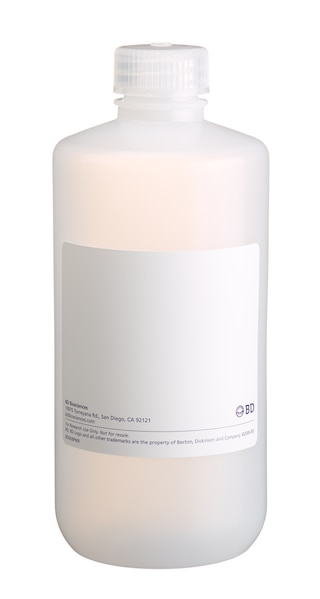
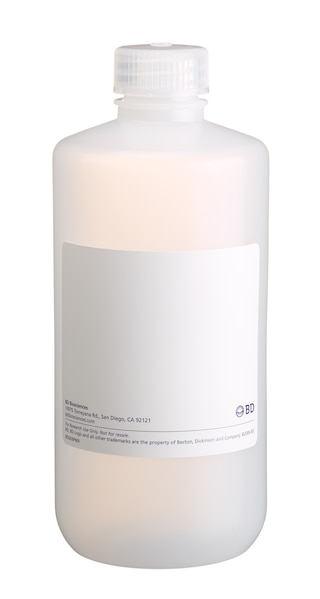
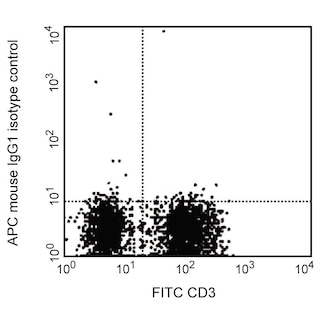
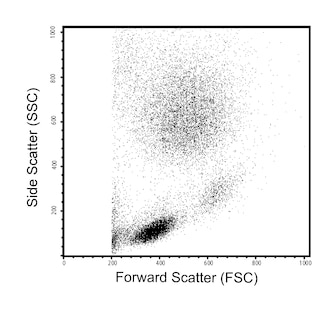
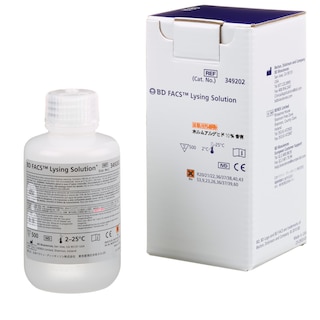
The K8 monoclonal antibody specifically recognizes Sialic acid-binding Ig-like lectin 9 (Siglec-9) which is also known as CD329. Siglec-9 (CD329) is a single-pass type I transmembrane glycoprotein that is encoded by SIGLEC9 which belongs to the I-type lectins within the Ig superfamily. This lectin is comprised of an N-terminal extracellular region that contains an IgV domain, which binds sialic acid, followed by two Ig-like C2-type domains, a transmembrane region, and an intracellular domain with an immunoreceptor tyrosine-based inhibitory motif (ITIM) and an ITIM-like motif . It is highly expressed on monocytes, neutrophils, and expressed at lower levels on a proportion of NK cells, B cells and T cells. Siglec-9 (CD329) may play roles in the regulation of T cell and NK cell responses and neutrophil apoptosis.

Development References (5)
-
Avril T, Floyd H, Lopez F, Vivier E, Crocker PR. The membrane-proximal immunoreceptor tyrosine-based inhibitory motif is critical for the inhibitory signaling mediated by Siglecs-7 and -9, CD33-related Siglecs expressed on human monocytes and NK cells.. J Immunol. 2004; 173(11):6841-9. (Clone-specific: Flow cytometry, Functional assay). View Reference
-
Carlin AF, Uchiyama S, Chang YC, Lewis AL, Nizet V, Varki A. Molecular mimicry of host sialylated glycans allows a bacterial pathogen to engage neutrophil Siglec-9 and dampen the innate immune response. Blood. 2009; 113(14):3333-3336. (Biology). View Reference
-
Fraschilla I, Pillai S. Viewing Siglecs through the lens of tumor immunology.. Immunol Rev. 2017; 276(1):178-191. (Biology). View Reference
-
Nguyen DH, Hurtado-Ziola N, Gagneux P, Varki A. Loss of Siglec expression on T lymphocytes during human evolution.. Proc Natl Acad Sci U S A. 2006; 103(20):7765-70. (Biology). View Reference
-
Zhang JQ, Nicoll G, Jones C, Crocker PR. Siglec-9, a novel sialic acid binding member of the immunoglobulin superfamily expressed broadly on human blood leukocytes.. J Biol Chem. 2000; 275(29):22121-6. (Immunogen: Flow cytometry). View Reference
Please refer to Support Documents for Quality Certificates
Global - Refer to manufacturer's instructions for use and related User Manuals and Technical data sheets before using this products as described
Comparisons, where applicable, are made against older BD Technology, manual methods or are general performance claims. Comparisons are not made against non-BD technologies, unless otherwise noted.
For Research Use Only. Not for use in diagnostic or therapeutic procedures.